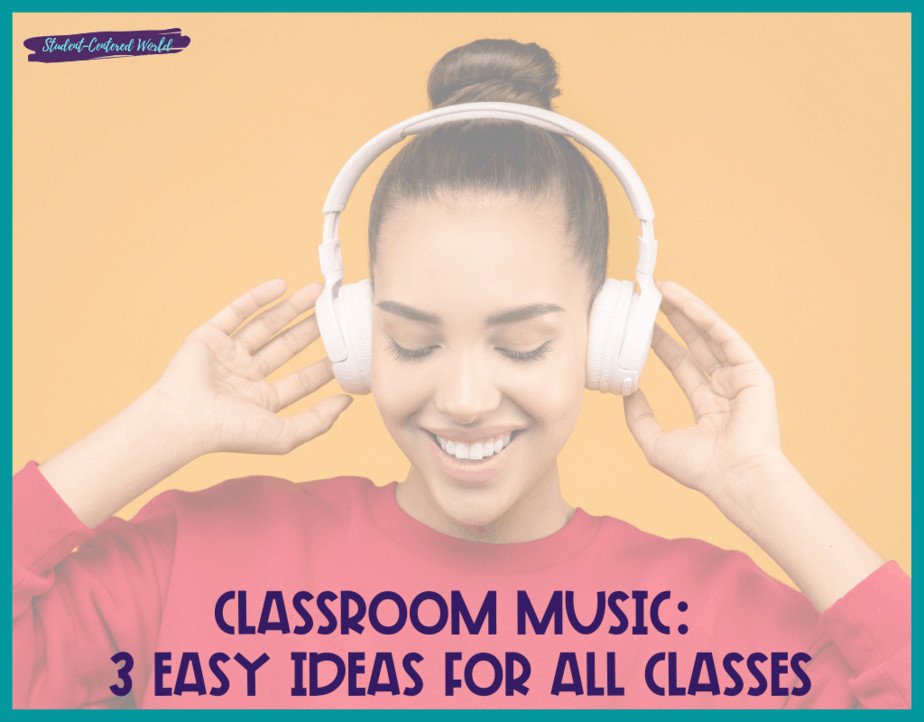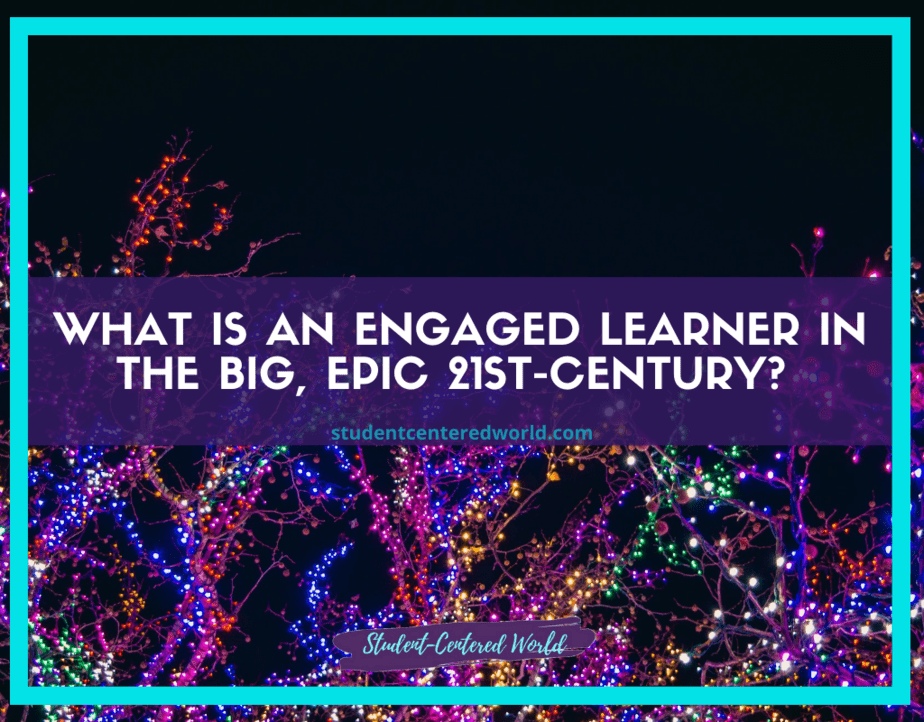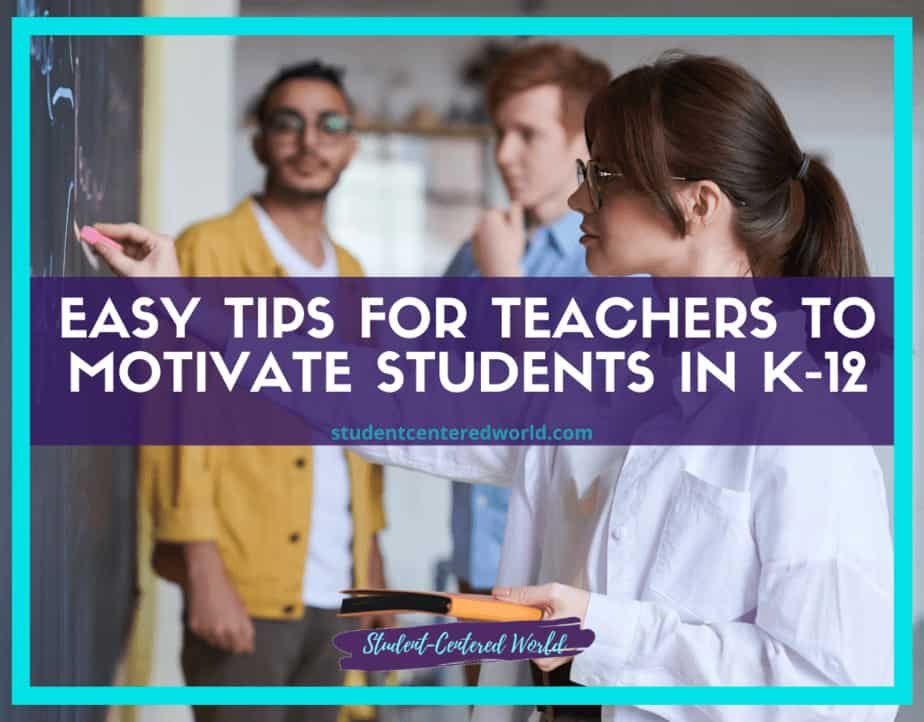Classroom Music: Appropriate for Study and Learning Help
Most educators don’t realize that you can control the noise level of your class by adding more “noise”…and by that, I mean classroom music. This accomplishes a number of things (and many are counter-intuitive to what you think).
First, it adds more “white noise” to the room…which automatically makes the class quieter. Second, studies have shown that students can focus better with music in the background (in fact, often they don’t even know that anything is playing unless it is a song that they know).
Most importantly, music helps students stay focused and engaged in the lesson. Let’s explore how you can add complex layers of music to your class…and make it look easy.

Naturally Incorporating Classroom Music
As a social studies teacher, it is easy to cheat. US History II is the absolute best for this. I play classroom music from whatever decade we are studying, so we move from the jazz of the Roaring 20s into music from the 2000s. It is always fun when you hear them start perking up with, “Oh! I know this song!”.
It keeps it extremely relevant and I usually just stream through Pandora or even YouTube to find a good playlist of classroom music (you’ll get a big thumbs up from your students if they hear you are using YouTube as that is how they often listen to their music….and for good reason.)
Other courses and classes are not as easy, but there’s a fix for that. At the beginning of the year, I surveyed the students with five Pandora channels that I know will always play appropriate classroom music and I rotated with the top 2. Different stations have won out depending on the dynamic of my class of students. You can walk past my classroom at any given time and the classroom music might be Country….or Motown…or Disney tunes. It really depends on the students.
I had a colleague who also did this by polling the students about their favorite songs. He made a playlist and when he would have time for classroom music, he would play it. His students were guaranteed to hear their favorite song at some point in the school year and it was always an exciting moment. Granted, this took a little longer to coordinate as he had to make sure he had “clean” versions of them, but once it was done, it was done, and it worked out well.
(This post may contain affiliate links that won’t change your price but will share some commission. As an Amazon Associate, I earn from qualifying purchases. Please read our disclosure policy for more information.)
But…why music in the classroom?
Today’s students, both Generation Z and Generation Alpha alike, have distinct learning preferences, with music playing a pivotal role in their lives. Research shows that music significantly impacts mood and aids concentration, making it a valuable tool in the classroom.
One of the key differences is their absolute need for music. It is at their fingertips and it really resonates with them. In an article from Forbes titled “New Study Spotlights Gen Z’s Unique Music Consumption Habits“, teens were surveyed as to their musical habits. “Almost all survey respondents (94%) cite music as “important” or “very important” (73%) to their lives. Most (92%) say the music they listen to impacts their mood.” When you use music in the classroom, it is incredible the transformation that takes place.
If a class is getting a bit past that volume level, or they’re distracted, or something on their own accord just isn’t going the way it should be and the music isn’t up, go ahead and turn it on.
The educational benefits of classroom music are numerous. Studies indicate that students are more attentive and perform better on exams when exposed to music. Additionally, music fosters creativity and exploration, exemplified by renowned composers who began their careers in childhood.

Fortunately, integrating music into the classroom has never been easier, with various platforms offering access to curated playlists and clean versions of songs. Whether through YouTube playlists, Pandora, or Spotify, educators can tailor music selections to suit different learning activities and moods.
Every single time I have ever done this, the students mellow out and get into a groove. Think about it: they are listening to music that either they have picked or are relevant. With something having THAT MUCH influence in their overall being as the survey above states, it is only natural that it will change the mood and even the overall dynamic of a classroom.
There is also scientific reasoning behind this. In an article aptly titled, “Benefits of Listening to Music in the Classroom“, Dr. Frances le Roux discusses (with a number of references backing her up) that “music stabilises mental, physical and emotional rhythm to attain a state of deep concentration and focus, to enable the student to process and learn large amounts of information”.
Scientifically, music stabilizes mental and emotional rhythms, facilitating deep concentration and information processing. Many individuals, including students, find that background music creates an optimal environment for focused work, similar to the experience of professionals who listen to music while working.
Think about it…how many people do you know that have music playing in the background when they are doing work? It really creates a specific mood that lends itself to a positive nature and allows the opportunity to intensely focus.
Music also allows people of all ages to explore their creativity. There are plenty of examples to prove this point. For example, composers Mozart, Bach, and Beethoven all began their careers in childhood.
Fortunately, we live in a day in age where it’s easy to provide this for our students. You can create a YouTube playlist, turn on programs like Pandora or Spotify (with explicit filters engaged), or physically download the songs to your device to play out loud. You can also switch playlists depending on the tone you’re looking for in class.
It’s never been easier to engage your students with music in the classroom. I encourage you to try music as a method of engaging your students with the content being presented.
Taking Classroom Music One Step Further
Listening to music while learning offers numerous benefits across various educational settings, from elementary schools to high school classrooms. Incorporating school-appropriate songs into the learning environment not only enhances engagement but also aids in cognitive development and retention of important facts.
For younger students, familiar tunes from artists like Taylor Swift, Selena Gomez, and Justin Bieber can serve as effective classroom songs, capturing their attention and making learning more enjoyable. Whether it’s the catchy melodies of Katy Perry or the iconic beats of Michael Jackson, popular music provides a relatable and engaging backdrop for educational activities.
In high school settings, music educators can utilize a diverse range of genres, from the soothing sounds of Ed Sheeran to the timeless classics of Bob Marley and the Beach Boys. Introducing students to different types of music not only broadens their musical horizons but also enhances their understanding of music theory and ear training.
For advanced students, instrumental music such as classical compositions by composers like Beethoven and Mozart can provide a stimulating environment for focused study and concentration. These timeless pieces not only serve as a background for learning but also promote deep engagement with the subject matter.
Incorporating music into the classroom can also serve as a brain break during long school days, allowing students to recharge and refocus before transitioning to different activities. Whether it’s listening to the upbeat rhythms of Bruno Mars or the melodic harmonies of Stevie Wonder, music provides a welcome respite from the rigors of academic work.
Furthermore, creating a classroom playlist tailored to the specific needs and preferences of students can foster a positive learning environment. From uplifting anthems like “High Hopes” by Panic! At The Disco to motivational tracks like “The Best Day of My Life” by American Authors, music has the power to inspire and uplift students of all ages.
Moreover, participating in one-day workshops or integrating music-related activities, such as exploring the music of Schoolhouse Rock or creating compositions inspired by Christmas tree melodies, can further enhance the educational experience.
It’s important to note that while music can enhance learning, it should be played at low volumes to avoid distraction. Utilizing affiliate links to access curated playlists or purchasing educational materials related to music can further support music integration in the classroom.
Listening to music in the classroom on a daily basis is good for a number of reasons. However, did you know that there are specific genres that actually help a person study? There are a number of stations on Pandora that promote this, but they are all versions of Classical. The tunes and melodies of the instruments help set a brain pattern that is good for memory.
Dr. Le Roux also brings up a study in her article. She says, “In a study at the University of California, students used a headset to listen to either white noise, relaxation music, or Mozart for 10 minutes. The Mozart group performed better on spatial tasks than those in the other two groups.”
At the end of the day, playing music in the classroom on a regular basis is as beneficial as allowing your students to move in a way that benefits their learning. It sets a tone and has multiple psychological benefits. It is our job as educators to make sure that we are teaching our students in a way that benefits them the best.
That can be a bit intimidating for those who have taught the other generations. On the same token, it keeps things fresh and forces us to think outside of the box. If the students in our classrooms today are musically inclined (especially in an era where arts funding is not what it used to be for those other generations, either!), shouldn’t we be doing everything in our power to make sure they are utilizing that in the best ways possible?
They are a new generation of students and we need to make sure we are a new generation of educators, willing and ready to meet them in the middle and ensure their success in the life we are helping them prepare for.
At the end of the day…
Listening to music while learning offers a multitude of benefits, including increased engagement, cognitive development, and retention of important concepts. By incorporating a variety of school-appropriate songs and music genres, educators can create a dynamic and enriching learning environment for students of all ages.
While daily exposure to music in the classroom offers numerous benefits, certain genres, particularly classical music, have been found to enhance studying and cognitive performance. Studies suggest that classical music, such as Mozart, can improve spatial reasoning and memory retention.
Moreover, music can serve as a powerful tool for setting the tone and enhancing the learning environment. Educators can leverage music to motivate students during challenging tasks or transition times, fostering a positive and productive atmosphere.

In conclusion, incorporating music into the classroom is not only beneficial but essential for catering to the diverse learning preferences of students of all ages. Whether through curated playlists, familiar songs, or classical compositions, music serves as the perfect soundtrack for a dynamic and engaging learning environment. As educators, embracing the power of music enables us to meet the needs of today’s learners effectively.
Music in the classroom can be used to set a tone. It can be something that gets students excited about what they are learning or it can help them find motivation when studying is getting difficult – especially if you play music related to your lesson, or relevant to the subject matter!
It has multiple benefits and so many ways to be implemented. It is difficult to say it is a “waste of class time” when the opposite can be said. It can do nothing but help those students who need just that extra push!
Stop Driving the Teacher Struggle Bus
Are you struggling with student engagement, apathy, or keeping your class on track?
💫💫 There’s hope! 💫💫
Join my free teacher workshop “Choosing Choice” and in just 45 minutes, you’ll craft a practical plan to revitalize your teaching. Discover the magic of student choice in boosting engagement, gain quick implementation ideas, and explore strategies for year-long success.
Unlike overwhelming workshops, my approach guides you in real-time, providing more classroom options, reducing stress, and giving you more personal time.
Plus, you’ll earn a 45-minute professional development certificate and have 7 days of access.
Don’t miss this chance to transform your teaching; click below to secure your spot now!
This article was originally published on November 18, 2018







